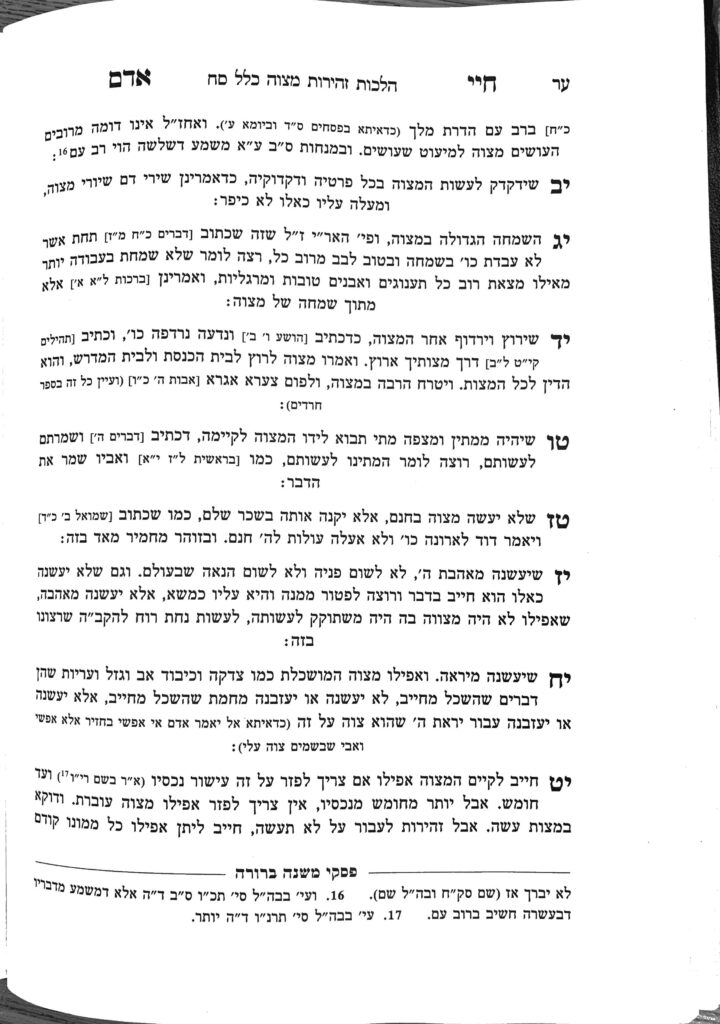We are continuing in siman 17, which discusses the concept of doing mitzvos out of ahavas Hashem.
The MIshnah in Pirkei Avos (1:3) teaches us that a person should not serve Hashem for reward, but out of love for Hashem. If a person serves Hashem for the purpose of the reward, they have still fulfilled the mitzvah, but the extra expression of ahavas Hashem is lacking.
The Gemara says לעולם יעסוק אדם בתורה ובמצות אף על פי שלא לשמה, שמתוך שלא לשמה, בא
לשמה. A person should serve Hashem shelo lishmah, because through serving Hashem shelo lishmah, one will eventually come to serve Hashem lishmah. The Gemara teaches us that a person may have various reasons for serving Hashem shelo lishmah, but they will eventually lead to lishmah.
The Gemara stresses that leolam, it always has to happen this way. If a person thinks that they will have a constant commitment to serve Hashem purely out of ahavas Hashem, they are fooling themselves. A person must realize that they need other motivations to serve Hashem, but their goal is to eventually not need those motivations. A person should want to reach that level, and wanting to reach such a level is in itself a fulfillment of ahavas Hashem at their current level. A person must recognize they have a yetzer hara, and various other things which pull on them, so the shelo lishmah is a necessary step in the process.
The Gra in Mishlei says that a person who tries to skip the step of shelo lishmah will fall and become angry at Hashem for allowing them to fall. However, they must realize that they fell because they skipped a step. Rav Dessler adds that the Gemara above is teaching us this very idea, that one cannot skip the step of shelo lishmah.
Rav Wolbe quotes the Rambam that when a child is young, a parent may use candy as a motivation for the child to learn Torah and do mitzvos. As the child gets older, candy may no longer be a motivation, so the parent will use money. When they get older, the motivation may be a good shidduch, and when they get even older, it may be to get a good position. The Rambam is teaching us that even when a person is much older, they still require the motivation of shelo lishmah, and that the leolam of the Gemara extends much into adulthood.
The Shela says this same idea, and writes that if a person follows this path, when they are 60, they should be able to learn lishmah. A person should not be discouraged that it takes them a long time to reach this level, because it is why we are in this world.
When Rav Chaim Volozhiner talks about this concept, he writes that mitoch shelo lishmah ba lishmah means that within a moment of learning shelo lishmah, a person can feel the flavor of the lishmah as well. The same is true about mitzvos as well.
Summary
A person should strive to perform mitzvos out of ahavas Hashem, that is, out of a desire to perform mitzvos simply because it is Hashem’s ratzon. However, this goal is a lifelong process, and begins with a long process of serving Hashem shelo lishmah, in order to eventually reach a level of lishmah.



